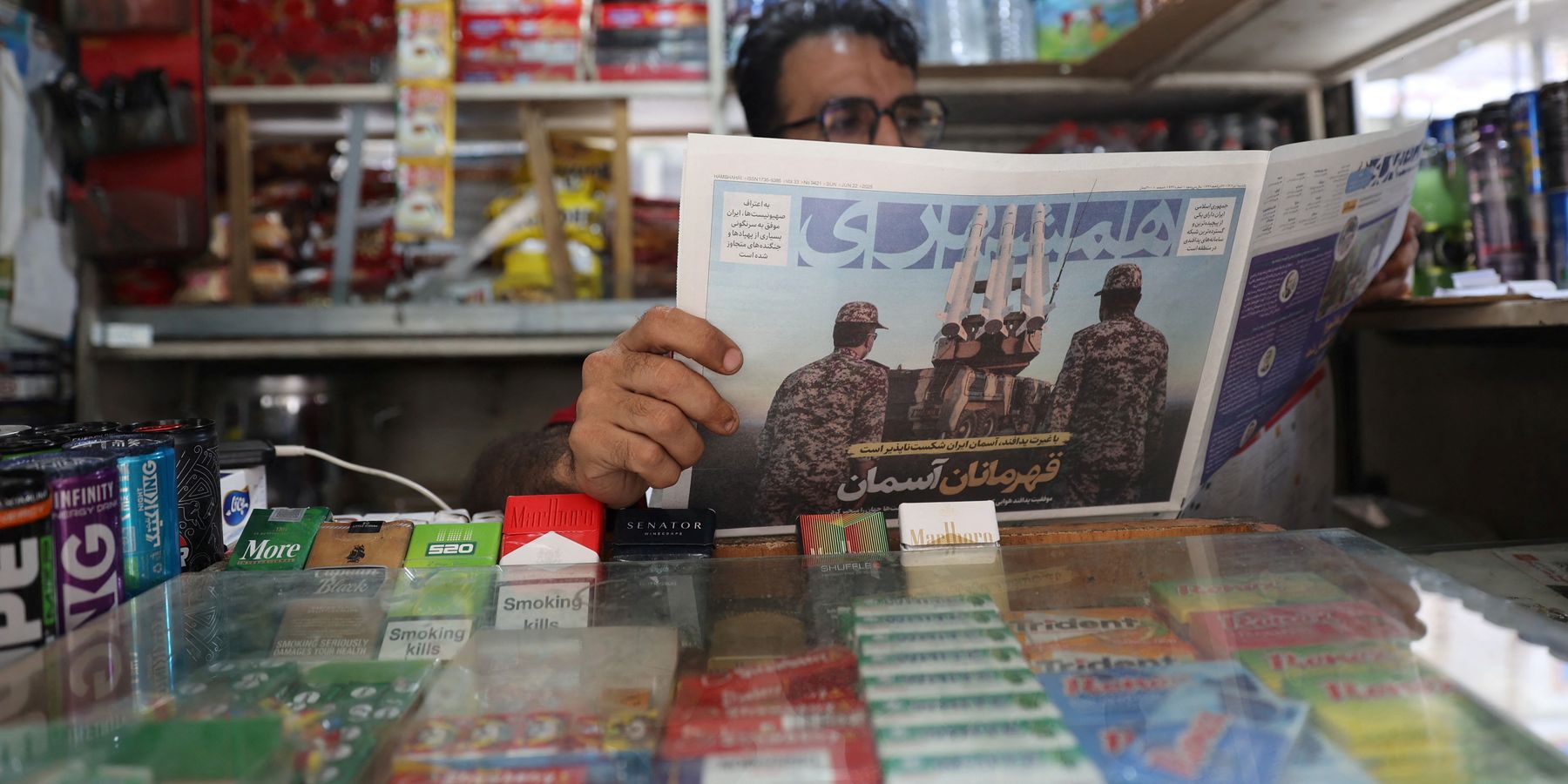The United States has finally entered Israel’s escalating war against Iran, launching targeted strikes on Iran’s nuclear facilities to obliterate Tehran’s nuclear threat, a goal once more effectively achieved through the 2015 Iran deal.
President Trump warned Iran that there will be peace or a tragedy far greater than what Iran has witnessed in recent days, signaling that there were “other targets” if Iran wished to escalate.
Yet even this one-ended strike may not fully eradicate Iran’s indigenous nuclear capabilities. It certainly hasn’t ended Iran’s attacks on Israel, and now opens up risks to American troops and assets in the region. In fact, Iran’s possible responses from here on are varied and unpredictable. But we know the costs — particularly economic — are escalating, and could be devastating for all parties involved and worldwide.
Israel is already bearing massive economic costs. Estimates suggest that a month-long war could cost Israel around $12 billion, with daily military expenses averaging $725 million. If Iran targets more civilian infrastructure, these costs could escalate sharply.
Over 5,000 Israelis have already been evacuated from their homes due to missile strikes. Labor shortages are worsening as tens of thousands of reservists, many from critical high-tech and industrial sectors, are mobilized. By the end of 2024, the Gaza war had already drained Israel of over $67.5 billion, excluding significant civilian and infrastructure damages and broader economic losses, which remain difficult to quantify.
A swift military victory might mitigate some economic impacts, but a prolonged war could severely impair Israel’s economic growth, strain fiscal stability, and potentially harm its international credit rating.
Even before the Israel strikes, Iran faced a daunting infrastructure crisis, urgently needing over $500 billion in investments to address critical economic shortfalls exacerbated by U.S. sanctions. Israeli attacks have deepened this crisis, destroying vital civilian and energy infrastructure. The direct costs of reconstruction alone could reach tens of billions of dollars, adding enormous strain to Iran’s already battered economy and limited fiscal resources.
My estimate draws on the latest 2023 Iranian household expenditure survey, revealing that over 80% of Iranians fail to meet the 2,100-calorie daily requirement and suffer from food insecurity. A prolonged war would only exacerbate this humanitarian crisis, pushing the country toward a potential national catastrophe.
Iran could retaliate by launching cyberattacks on critical U.S. infrastructure, such as power grids, water systems, pipelines, financial networks, and other essential services. The economic consequences of such cyber retaliation could range from hundreds of billions to over a trillion dollars.
Further, if Iran targets energy infrastructure in the Gulf states or blocks the Strait of Hormuz, it could disrupt over 20% of global oil and LNG supplies, potentially driving oil prices to as high as $150 per barrel. A Bloomberg analysis warns that sustained prices at this level could shrink global GDP by nearly $1 trillion annually, fueling global stagflation. For the United States, this would severely undermine efforts to control inflation and economic stability.
Netanyahu’s ambition to topple Iran’s regime is unlikely to succeed without direct U.S. involvement, including the deployment of hundreds of thousands of ground troops. If Washington intervenes in this way, it risks plunging itself into yet another open-ended war, requiring another $2 trillion to $3 trillion and thousands of lives lost.
Even if Israel achieves its immediate military aims by decapitating Iranian leadership, neutralizing military capabilities, and potentially fracturing Iran without Tehran’s painful retaliation, such a victory would likely prove hollow. The resulting chaos would unleash waves of insurgency, refugee crises, and regional instability surpassing the turmoil that followed the 2003 U.S. invasion of Iraq.
Given the decentralized nature of the Islamic Revolutionary Guard Corps (IRGC), even a fragmented Iran could remain a persistent threat. Remaining IRGC forces and proxies could continue attacks against Western and Arab economic targets across the region, imposing ongoing risks to American interests and causing substantial losses for U.S. allies.
The regional economic fallout could be existential for Gulf allies such as Saudi Arabia, the UAE, Qatar, and Bahrain. Due to rising tensions, the IMF has already revised its 2025 economic growth forecast for the region from 4% down to 2.6%. A sustained two-to-three-year decline in growth, coupled with vanished foreign direct investment and delayed mega-projects critical to Saudi Arabia’s Vision 2030, could cost these economies anywhere between $730 billion and $1 trillion.
As one Gulf official noted, a prolonged conflict could erase years of economic progress by disrupting national development strategies and severely damaging investor confidence. The appearance of a fragmented Iran might seem advantageous at first glance, but the ripple effects would ultimately burden U.S. taxpayers and businesses, drawing America into an extended regional quagmire.
If Israel’s military campaign fails, Tehran will likely emerge emboldened, not weakened. Already, Israeli attacks appear to have fueled Iranian public support for nuclear armament, potentially paving Iran’s path toward a nuclear weapon.
Despite its heavy cost, Iran retains the right under Article X of the Nuclear Non-Proliferation Treaty (NPT) to withdraw, allowing it to restart its nuclear program without oversight from the International Atomic Energy Agency. Such a scenario would likely trigger a chain reaction of nuclear proliferation across the region and beyond, from Berlin and Warsaw to Ankara, and from Riyadh to Seoul and Tokyo, unraveling decades of non-proliferation efforts.
Imagine a nuclear-armed Middle East, with European and East Asian nations scrambling to develop their own deterrents. What began as a targeted Israeli strike could spiral into a global security nightmare. The economic implications would be staggering: higher energy prices, soaring insurance premiums, investor uncertainty, and massive military build-ups, all severely undermining American strategic and economic interests.
A new arms race extending from the Gulf to the Pacific could destabilize the global economy and dramatically weaken America’s strategic posture. No American president, not even during the Cold War, has ever had to confront the simultaneous unraveling of the global nuclear order across multiple continents. President Trump would inevitably be the first.
It is unclear whether the Trump Administration could even restart the talks after this weekend’s strikes. But rather than sinking billions into another costly war, Washington could offer sanctions relief and regional economic engagement in exchange for Iran returning to strict compliance at lower levels of enrichment than those prescribed by the 2015 JCPOA or even denuclearization. Such a deal could expand it into a de facto non-aggression pact between Iran and Israel, something that was previously unthinkable.
My recent research highlights that the U.S. can indeed secure a stronger and more comprehensive deal through licensing bilateral trade up to $25 billion annually and providing avenues for American companies to access Iran’s largely untapped $4 trillion investment market by 2040. Such an agreement could stabilize the region through mutual economic engagement rather than military escalation.
The alternative is unspeakable: a trillion-dollar regional disaster, a shattered nuclear agreement, a nuclear-armed Iran, and the disintegration of alliance networks that have historically underpinned U.S. dominance in the Middle East.
- Short, sharp shock? Trump's idea of quick victory is illusory ›
- A nuclear deal with Iran could generate billions for US economy ›
- Accusations already test Trump brokered Iran-Israel ceasefire | Responsible Statecraft ›
- If Iranian regime collapses or is toppled, 'what's next?' | Responsible Statecraft ›
















